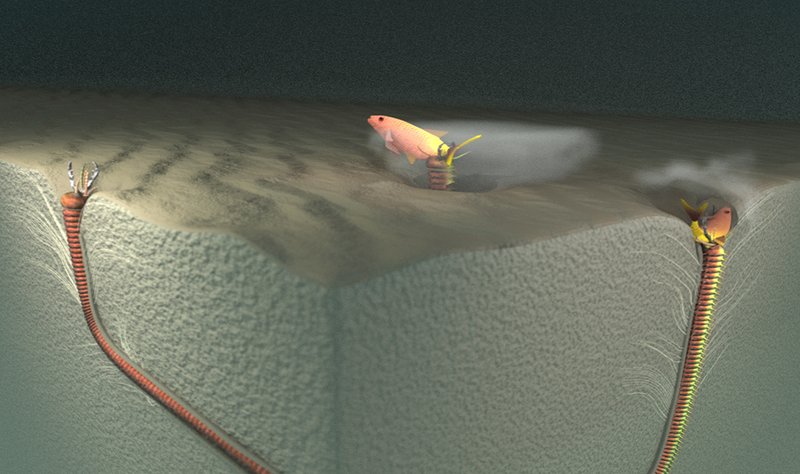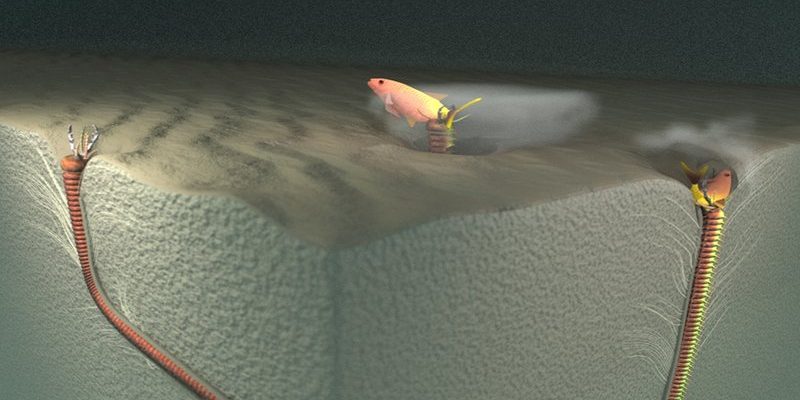
To give you an idea, Bobbit worms aren’t your average garden variety critters. They’re flat, segmented, and can grow up to ten feet long, living in a tube under the ocean floor. This worm’s ability to go from hidden to high-profile in an aquarium setting is what makes many hobbyists sit up and take notice. Let’s dive deeper into why these stories are such a hot topic in the marine community.
What Exactly Is a Bobbit Worm?
Let me explain what makes the Bobbit worm so unique. Scientifically known as *Eunice aphroditois*, these creatures are often found in tropical and subtropical waters. They create long, tube-like homes in the substrate, hiding themselves away while waiting for unsuspecting prey to swim by. Think of them as the ninja assassins of the ocean floor, sneaking up on fish and crustaceans.
What’s even more fascinating is their impressive hunting technique. They can extend their powerful jaws—armed with sharp teeth—at lightning speed to snag food. It’s a bit like watching a slow-motion movie that abruptly switches to fast-forward when lunch shows up. This hunting behavior is just one reason why marine hobbyists can’t help but share their discovery tales. Understanding their biology adds layers to their allure.
However, they aren’t just thrilling to read about; they also come with their fair share of challenges. If you’re considering keeping one in your aquarium, you’ll need to provide the right environment, which can be tricky! Habitat considerations often get discussed among hobbyists, as they can vary widely depending on the species of fish or coral you already have.
Why Do Marine Hobbyists Get So Excited About Them?
Now, you might be wondering why the buzz around Bobbit worms is so palpable. For many marine hobbyists, discovering a Bobbit worm in their system is akin to finding buried treasure. It’s not just about the worm itself but also the stories that come with it! These creatures can go unnoticed for a long time, making their eventual appearance a surprise that often leads to excitement and even panic.
When hobbyists share these discovery stories, they’re not just talking about the worms. They’re diving into the very essence of marine exploration—the thrill of the unknown. Just picture it: you’re pulling out a piece of live rock and suddenly, there it is—a vibrant Bobbit worm wriggling its way into your view. It’s a scene that could easily spark conversations about marine life that go well into the night.
Sharing these stories not only builds camaraderie but also helps spread awareness about the importance of responsible aquarium keeping. Many hobbyists stress the need for proper research and preparation before adding such intriguing species to their tanks.
Challenges of Keeping Bobbit Worms
With excitement comes responsibility. Keeping a Bobbit worm in an aquarium isn’t all fun and games; it has its challenges. Firstly, you’ll need to think about size. These worms can grow quite large, which may not suit smaller tanks. If you’re new to the hobby, it’s easy to underestimate how much room these creatures need.
You might also be wondering about compatibility. Bobbit worms are known for being aggressive eaters. If you have smaller fish, they might end up on the menu! Some hobbyists find themselves in a panic when they notice their once-peaceful community tank turning into a battleground.
Another concern is their habitat requirements. Bobbit worms thrive in sand substrates and need plenty of places to burrow. Inadequate conditions can lead to stress, making them more susceptible to diseases. So, it’s crucial to create a healthy environment that mimics their natural habitat if you decide to keep one.
Bobbit Worm Myths and Misunderstandings
Honestly, the fascination with Bobbit worms has also led to an assortment of myths and misunderstandings. Some people hear about them and imagine jumping jellyfish or venomous snake-like creatures, but the truth is far more mundane. Bobbit worms can be creepy-looking, but they pose no danger to humans.
Many marine hobbyists have fun debunking these myths. They often share tales of how they heard someone scream at the sight of a Bobbit worm, only to find out it was just a big, curious critter. This community engagement can help new hobbyists feel more comfortable and informed when they discover one themselves.
It’s essential to clarify such misconceptions. When people hear exaggerated stories, they might be discouraged from exploring marine life further. True understanding can foster a deeper appreciation for these remarkable creatures, leading to more responsible attitudes within the hobby.
How to Handle a Bobbit Worm Discovery
If you ever find yourself in the position of discovering a Bobbit worm, you might be unsure of what to do next. First off, take a moment to enjoy the encounter! It’s not every day you spot such a unique ocean creature in your tank. Here’s the thing: while they can be thrilling to find, you need to approach the situation thoughtfully.
Start by assessing your tank conditions. If you’re not fully prepared to accommodate one, consider whether it might be best to remove it. Gently and carefully, you can relocate it to a suitable environment. Use gloves and have a separate container ready to ensure the worm stays moist.
Should you decide to keep it, research its specific needs carefully. You’ll want to tweak your setup, if necessary, to ensure the worm thrives. Engage with fellow hobbyists online or at local marine clubs—many have invaluable experiences to share that can help you out.
Community Reactions: Sharing Those Discovery Stories
In the marine hobbyist community, sharing discovery stories has become a rite of passage. When someone finds a Bobbit worm, it’s often celebrated with photographs and animated social media posts. You know that feeling when you get a new plant for your garden? It’s similar, except now it’s about a fascinating creature from the sea!
Hobbyists often reminisce about their own Bobbit encounters, creating a sense of belonging and excitement. These stories can offer a mix of humor, surprise, and a touch of nostalgia. They also help newcomers feel more connected to the community, reminding them that everyone’s journey has its unique twists and turns.
Furthermore, this sharing fosters a culture of appreciation for marine life. Awareness spreads about responsible care and the importance of sustainable practices within the hobby. It creates an atmosphere where enthusiasts respect both the creatures and the ecosystems they’re a part of, which is ultimately beneficial for all marine hobbyists.
In the world of marine hobbies, the buzz surrounding Bobbit worms represents much more than just their physical appearance. As they slip in and out of the shadows of our tanks, they remind us of the mysteries of the ocean and the excitement of discovery. For many hobbyists, encountering one of these incredible worms is a thrilling experience that leads to a journey of learning and growth.
Whether you’re considering adding a Bobbit worm to your aquarium or simply enjoying the stories from others, embracing the journey is what truly matters. With every discovery comes a chance to learn more about marine life, engage with fellow enthusiasts, and cultivate a deeper understanding of the natural world. So next time you hear a tale about a Bobbit worm, lean in, let the excitement wash over you, and maybe, just maybe, start dreaming about your own underwater adventures.

